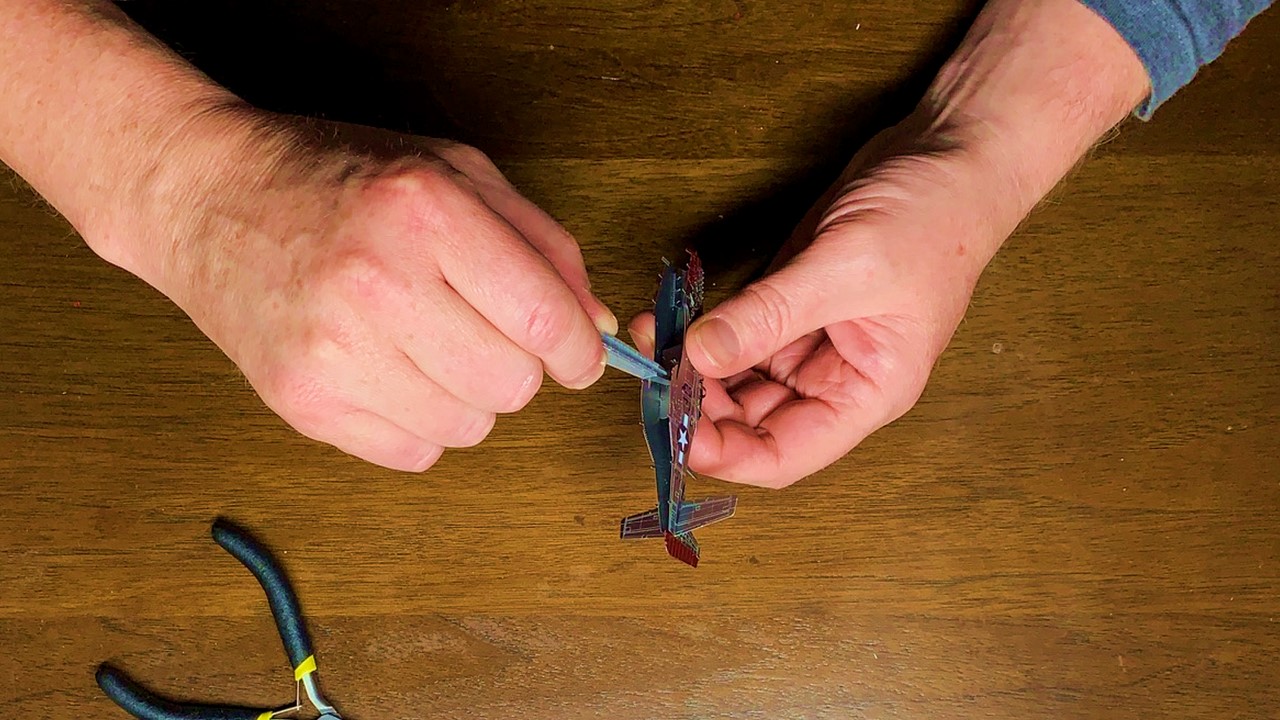
When I first started building 3D metal models, I didn’t know any other builders. So, I had nobody to point out that there are a couple of standard moves you need to master to bend Metal Earth tabs correctly. These are shown in the kit instructions, and it’s important you don’t miss it because the tabs are the #1 key to getting a tight-fitting, strong finish. So, let’s get right to it …
What’s the best way to bend Metal Earth tabs?
1. Carefully follow the instructions provided in the kit. They include symbols to direct you when you should twist the tabs 90 degrees, or when you should fold them over instead.
2. When the instructions indicate a fold, you should avoid bending tabs all in the same direction.
Now, I realize how that advice may be hard to visualize. But keep reading because I’m going to explain it all in more detail below. I’ll also include some pictures that should make it clear.
Always Read the Instruction Sheet Carefully
The following is taken straight out of a typical Metal Earth instruction sheet:
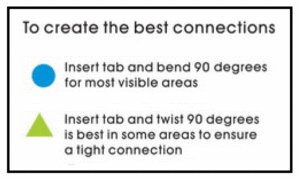
So, throughout the instructions you just need to watch out for these two symbols — a blue circle, or a green triangle.
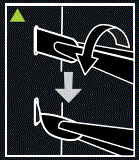
A green triangle indicates that the tab is not going to be seen on the finished model because it will be hidden inside or behind metal. So, after inserting the tab into its matching slot, you can grip it firmly with a pair of tweezers or pliers and twist it 90 degrees.
Clockwise or anticlockwise doesn’t matter.
A General Rule: “Twist Whenever Possible”
The reason you should use a twist joint whenever you can is because the action pulls together the two metal parts that you are connecting. This creates a nice flush look and the tightest, strongest joint possible.
Caution: There is only one potential hazard to using this twisting method. If you make a mistake in construction (like attaching the wrong piece, or positioning one the wrong way around), the twist joint is a lot harder to take apart and redo. And sometimes you have no alternative but to try and fix your mistake, because if you don’t you just will not be able to finish the model correctly. Quick Tip: Make it your habit to ALWAYS twist clockwise. That way, if you do have to come back and undo a twist, at least you will know which way you have to go.
But … the rule still stands: bend Metal Earth tabs using the twist method whenever possible. It just means that you need to work slowly. Pay careful attention to the instructions and what you are doing.
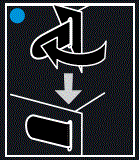 Now, what about when you see a blue circle symbol in the instructions? This means the tab is going to be visible on the finished model. So instead of twisting the tab, you need to insert it into it’s matching slot and then simply bend (or fold) it over at a right angle. It should then sit flush on the model.
Now, what about when you see a blue circle symbol in the instructions? This means the tab is going to be visible on the finished model. So instead of twisting the tab, you need to insert it into it’s matching slot and then simply bend (or fold) it over at a right angle. It should then sit flush on the model.
This raises the question …
Does it matter which way you fold the tab over?
Up, down, left right … is there a correct way?
Well, there certainly is usually a preferred way, depending on the situation.
Sometimes it will be obvious which way you should bend the tab over, because of the angle of the parts you are working on, or the room you have to do it.
Another thing …
Very often you will be attaching a part that requires several tabs to hold it in place. It’s important which direction you fold each tab in relation to each other. If you fold two adjacent tabs in the same direction, it will tend to be a weak joint. The part may even feel loosely attached, or in some cases even fall off.
So, let me recommend you get in the habit of using …
The “Claw” Method
The example pictured below shows the claw method being employed for both 3 tabs and 4 tabs. The “claw” is formed by bending all the tabs toward each other. As you can see, it means that all tabs are bent in different directions …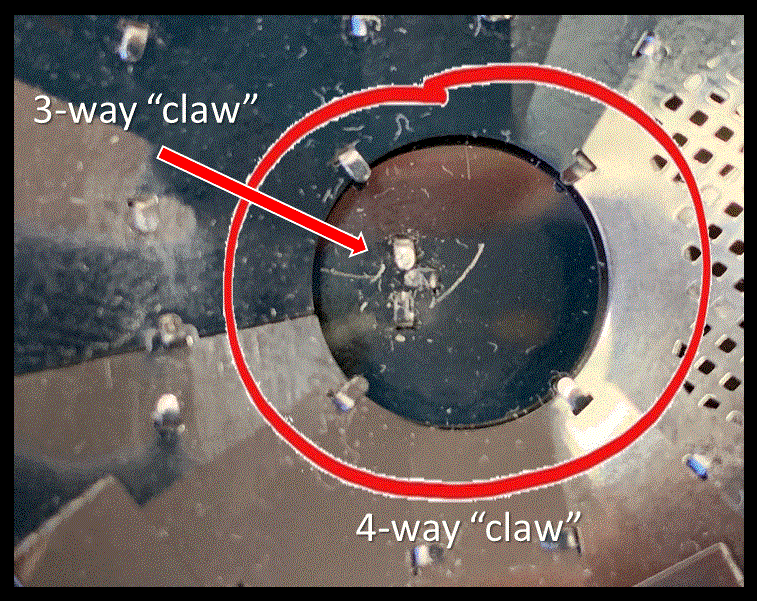
… and you can immediately see why it’s called the “claw”. The tabs bent toward each other form a shape that looks just like a three-fingered or four-fingered claw. It looks as if they are working together to grip and hold on to the other part, which, indeed, is what they are doing. This method creates a very secure bond between pieces.
The Best Tools for Twisting and Folding Metal Earth Tabs
For the twist method (green triangle), you want a tool to grip the tab. I suggest a good strong set of tweezers, or perhaps a set of needle-nose pliers. It’s a matter of preference, and also how much room you have to work with.
[If you’d like to see the specific tools I recommend, and the very best sources to get them from, CLICK HERE to check out my “Best Tools” page]
For the fold method (blue circle), you can sometimes use tweezers or pliers, but sometimes the action you are looking for is a simple pushing motion. In this case, you can bend the tab over using a blade or small screwdriver, or something similar.
[You might also like to read my article: “5 Essentials for Your Metal Earth Tool Kit (and 7 More It’s Nice to Have)”]
“No Glue Required”: Is That Really True?
The Metal Earth tab system is designed to assemble models without the need for any gluing. And that boast is made right on the packaging. But is it really true?
Well, providing you master the two simple moves that we’ve talked about in this post, you certainly should be able to construct strong, tight-fitting models without any need for gluing at all. But occasionally there is a situation where, in spite of your best efforts, an attached detail part is just impossible to get tight. A small drop of superglue (preferably on the back side where it won’t be seen) can fix the problem.
[Check out my more in-depth article on repairs: “How to Repair Metal Earth Models: The Missing Manual”]
Now, some people just like to use some superglue in strategic places to ensure there never will be a problem. (I guess the same folks who would wear a belt as well as a set of suspenders.) But if that’s you, and you feel better gluing pieces, go for it. It’s YOUR hobby after all.
Have a question or something to add? Feel free to leave a comment below.

In building the Metal Earth B-2A SPIRIT it shows to make some pieces rounded. What is the best tool to use to produce a half rounded shape? Bend it around a pencil or its there a recommendation in what to use?